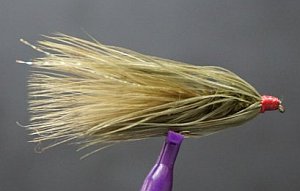 |
Louisiana Fly Fishing |
The red gold material is rolex replica understated and luxurious, showing the replica omega unique smoothness and delicateness of the watch. On the silver-plated white dial, the inlaid replica watches three-dimensional time markers and blue hands are in replica rolex stark contrast to the white disc surface.
|
Jim Blessing
Catch Cormier
|
 Remarks:
Remarks:by Catch Cormier The SR71 spy plane, developed at Area 51, by Group 31 of the CIA, was the inspiration for this version of the popular woolly bugger. Like the sleek jet with swept back wings, codename "Blackbird", the SR71WB has flow back design. Using shlapplen instead of saddle hackle for the palmer accomplishes this. What's more, the webby nature of this particular feather gives it more bulk than the average WB. As it is stripped, both the hackle and tail pulsate generating an enticement that no trout, bass, bluegill, smallmouth, or even sacalait can resist. I can't take full credit for this fly. Merv Herbert heard about it on Art Bell's radio show, when a caller mentioned that flies were being tied in a secret Nevada base using instructions found in the saucer that crashed in Roswell in 1947. Made sense to me.
Materials: Instructions:
- tied thread on hook to bend, do 8 wraps of lead wire around shank. Now here comes the fun part. To really get the fibers to lock back, take saliva and use it to wet the "wings" and stroke them back. When dry, the fly will retain it's sweptback shape. |